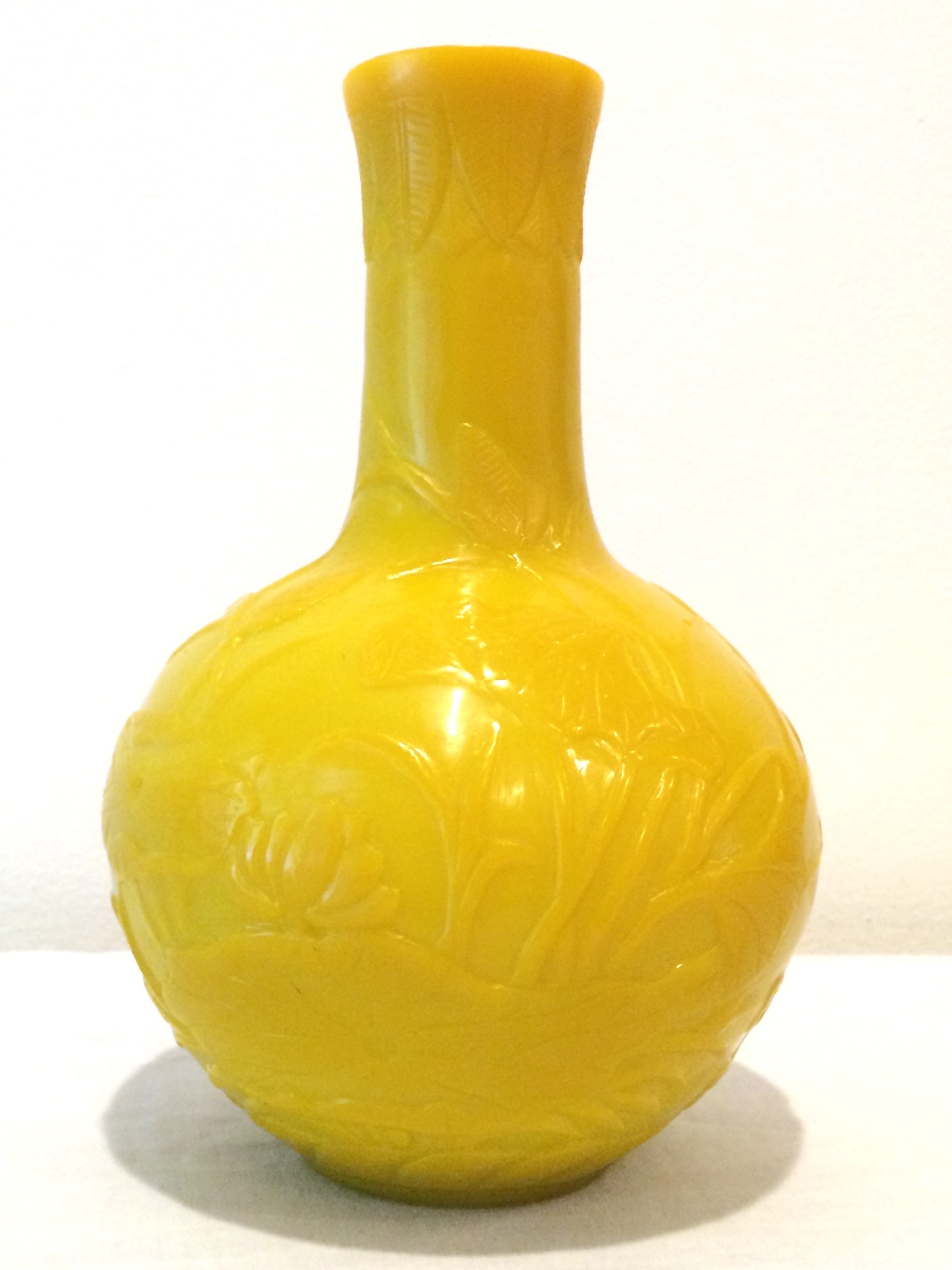Peking Glass on:
[Wikipedia]
[Google]
[Amazon]
 Peking glass, also known as Kangxi Glass,
Peking glass, also known as Kangxi Glass,
 Peking glass is an overlay carved glass created by layering material around a core, similar to
Peking glass is an overlay carved glass created by layering material around a core, similar to
 Peking glass, also known as Kangxi Glass,
Peking glass, also known as Kangxi Glass, Qianlong
The Qianlong Emperor (25 September 17117 February 1799), also known by his temple name Emperor Gaozong of Qing, personal name Hongli, was the fifth emperor of the Qing dynasty and the fourth Qing emperor to rule over China proper. He reigned ...
Glass or Tao Liao Ping, is a form of Chinese glassware
upTypical drinkware.
This list of glassware includes drinking vessels (drinkware), tableware used to set a table for eating a meal and generally glass items such as vases, and glasses used in the catering industry. It does not include laboratory ...
that originated in 18th century Beijing
Beijing, Chinese postal romanization, previously romanized as Peking, is the capital city of China. With more than 22 million residents, it is the world's List of national capitals by population, most populous national capital city as well as ...
, China
China, officially the People's Republic of China (PRC), is a country in East Asia. With population of China, a population exceeding 1.4 billion, it is the list of countries by population (United Nations), second-most populous country after ...
(then romanized as "Peking" in European writings). Originally used in the fabrication of glass snuff bottles, Peking glass has since been appropriated for a number of uses and continues to be produced in China.
History
Peking glass originated in 18th century China during the rule of theQing dynasty
The Qing dynasty ( ), officially the Great Qing, was a Manchu-led Dynasties of China, imperial dynasty of China and an early modern empire in East Asia. The last imperial dynasty in Chinese history, the Qing dynasty was preceded by the ...
. While China had long been a major producer of glassware, the introduction of European technologies to Asia in the 17th century caused a shift in the styles of Chinese glass makers. The principle couriers of these technologies were Jesuit missionaries, who introduced modern glass-making methods from Italy
Italy, officially the Italian Republic, is a country in Southern Europe, Southern and Western Europe, Western Europe. It consists of Italian Peninsula, a peninsula that extends into the Mediterranean Sea, with the Alps on its northern land b ...
to China, which was at the time closed to the West. The advances spurred by the Jesuits led the Kangxi Emperor
The Kangxi Emperor (4 May 165420 December 1722), also known by his temple name Emperor Shengzu of Qing, personal name Xuanye, was the third emperor of the Qing dynasty, and the second Qing emperor to rule over China proper. His reign of 61 ...
to establish an Imperial glass-works in 1696 to better produce the new material. The glass was commonly used in snuff bottles and vases, where it was used to imitate the harder to work jade
Jade is an umbrella term for two different types of decorative rocks used for jewelry or Ornament (art), ornaments. Jade is often referred to by either of two different silicate mineral names: nephrite (a silicate of calcium and magnesium in t ...
and other precious stones. Eventually, the process of creating Peking glass was spread outside of the imperial glass-works and into the general population, leading to many artisans adopting Peking glass as a medium. The golden age of Peking glass in China is widely cited as being the reign of the Qianlong Emperor
The Qianlong Emperor (25 September 17117 February 1799), also known by his temple name Emperor Gaozong of Qing, personal name Hongli, was the fifth Emperor of China, emperor of the Qing dynasty and the fourth Qing emperor to rule over China pr ...
in the mid-18th century. Though the art-form declined after the 19th century, the production of Peking glass continued in China through the Republican period and into the present day.
Creation
 Peking glass is an overlay carved glass created by layering material around a core, similar to
Peking glass is an overlay carved glass created by layering material around a core, similar to cameo glass
Cameo glass is a luxury form of glass art produced by cameo glass engraving or etching and carving through fused layers of differently colored glass to produce designs, usually with white opaque glass figures and motifs on a dark-colored backgro ...
. To create the overlay, a glass blower makes the shape, then dips the shape into a basin of liquid glass several times. This process creates multiple layers of glass that are then carved away to produce a textured image. Peking glass is often made with different colored layers of glass, creating contrast when the outer layers are carved away. Historically, many pieces of Peking glass were made with yellow glass (dubbed "Imperial Yellow") due to the colors' strong association with the Qing Imperial clan of Aisin Gioro
The House of Aisin-Gioro is a Manchu clan that ruled the Later Jin dynasty (1616–1636), the Qing dynasty (1636–1912), and Manchukuo (1932–1945) in the history of China. Under the Ming dynasty, members of the Aisin Gioro clan served as chie ...
.
Outside China
In the late 19th century, glass-works inCzechoslovakia
Czechoslovakia ( ; Czech language, Czech and , ''Česko-Slovensko'') was a landlocked country in Central Europe, created in 1918, when it declared its independence from Austria-Hungary. In 1938, after the Munich Agreement, the Sudetenland beca ...
produced imitation Peking glass beads for use as costume jewelry.
References
{{Glass makers and brands Glass art Chinese art Etching